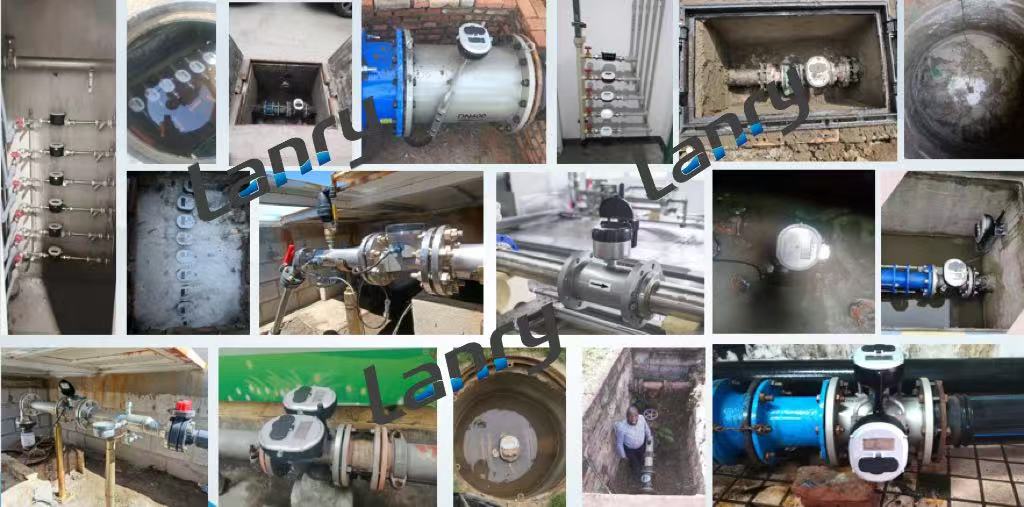1. Fluid - related Factors
Gas Bubbles in Water
Gas bubbles are a common problem in water supply systems. When water flows through pipes, especially in cases where the water pressure changes or there is a source of dissolved gases, gas bubbles can form. Ultrasonic waves propagate through water by vibrating water molecules. Gas bubbles, with their significantly different acoustic impedance compared to water, act as strong reflectors and scatterers of ultrasonic waves. When the ultrasonic signal encounters these gas bubbles, a large part of the energy is either reflected back prematurely or scattered in various directions. This disrupts the normal propagation of the ultrasonic signal between the transmitter and the receiver in the water meter. As a result, the meter may misinterpret the signal, leading to inaccurate flow rate calculations and incorrect water consumption readings.
Sediment and Impurities
Over time, water pipes accumulate sediment, rust, and other impurities. These substances can settle on the inner walls of the pipes and, in the case of ultrasonic water meters, can coat the transducer surfaces. Sediment and impurities on the transducer can attenuate the ultrasonic signal. The signal has to pass through this layer of contaminants before reaching the water, and during this process, its strength decreases. Additionally, the rough surface formed by the sediment can cause the ultrasonic waves to scatter, making it difficult for the meter to accurately detect the time - of - flight or Doppler shift (depending on the type of ultrasonic water meter). This interference with the signal leads to errors in measuring the flow velocity of water, ultimately resulting in incorrect water volume measurements.
2. Installation - related Factors
Incorrect Pipe Section Selection
The location of the ultrasonic water meter installation within the pipe network is crucial. If the meter is installed in a section of the pipe with a non - uniform flow profile, such as near a bend, elbow, or valve, the flow of water becomes turbulent. In a turbulent flow, the velocity of water varies significantly across the cross - section of the pipe. Ultrasonic water meters are designed to measure the average flow velocity of water. However, when installed in a turbulent flow area, the measured velocity may not be representative of the overall flow in the pipe. For example, in a pipe bend, the water near the outer wall of the bend flows faster than near the inner wall. If the ultrasonic meter measures the velocity at a point that is more influenced by the faster - flowing outer - wall water, it will overestimate the overall flow rate.
Improper Sensor Alignment
Proper alignment of the ultrasonic sensors is essential for accurate measurement. The sensors in an ultrasonic water meter need to be precisely aligned with each other to ensure that the ultrasonic signal travels through the water in a predictable path. If the sensors are misaligned, the signal may not reach the receiving sensor correctly. Even a small misalignment can cause the ultrasonic waves to travel a longer or more complex path through the water, which can lead to errors in the measurement of the time - of - flight or Doppler shift. This misalignment - induced error can accumulate over time and result in significant discrepancies in water consumption readings.
3. Environmental Factors
Temperature Variations
Temperature has a significant impact on the performance of ultrasonic water meters. The speed of sound in water is directly related to its temperature. As the temperature of water changes, the speed at which ultrasonic waves travel through it also changes. Ultrasonic water meters rely on accurate knowledge of the speed of sound in water to calculate the flow rate. If the temperature compensation mechanism in the meter is not properly calibrated or fails to account for rapid temperature changes, the meter will calculate the flow rate based on an incorrect value of the speed of sound. For example, if the water temperature increases, the speed of sound in water also increases. If the meter does not adjust for this increase, it will underestimate the flow rate because it assumes a lower speed of sound.
Electromagnetic Interference
In modern environments, there are numerous sources of electromagnetic interference (EMI). Ultrasonic water meters, which use electrical components to generate and receive ultrasonic signals, can be affected by EMI. Sources of EMI can include nearby power lines, electrical motors, and radio transmitters. EMI can interfere with the electrical signals within the water meter, causing noise in the received ultrasonic signal. This noise can distort the signal and make it difficult for the meter's signal - processing unit to accurately detect the relevant ultrasonic characteristics for flow measurement. As a result, the water meter may produce inaccurate readings due to the interference from external electromagnetic fields.
In conclusion, to ensure the accurate operation of ultrasonic water meters, it is necessary to consider and address these factors related to the fluid, installation, and the environment. By doing so, more reliable water consumption measurements can be obtained, which is crucial for efficient water management and billing systems.

Post time: Mar-10-2025

